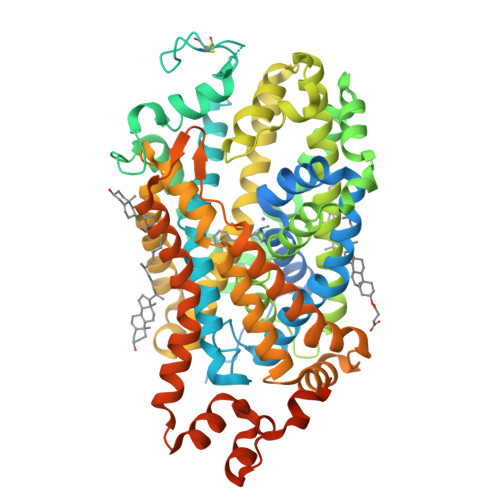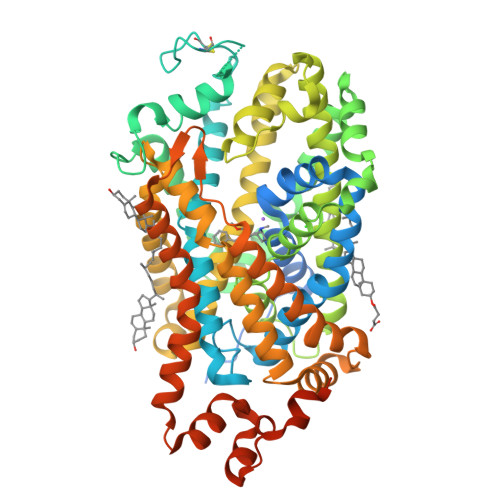Structure of the human dopamine transporter in complex with cocaine.
Nielsen, J.C., Salomon, K., Kalenderoglou, I.E., Bargmeyer, S., Pape, T., Shahsavar, A., Loland, C.J.(2024) Nature 632: 678-685
- PubMed: 39112703
- DOI: https://doi.org/10.1038/s41586-024-07804-3
- Primary Citation of Related Structures:
9EO4 - PubMed Abstract:
The dopamine transporter (DAT) is crucial for regulating dopamine signalling and is the prime mediator for the rewarding and addictive effects of cocaine 1 . As part of the neurotransmitter sodium symporter family, DAT uses the Na + gradient across cell membranes to transport dopamine against its chemical gradient 2 . The transport mechanism involves both intra- and extracellular gates that control substrate access to a central site. However, the molecular intricacies of this process and the inhibitory mechanism of cocaine have remained unclear. Here, we present the molecular structure of human DAT in complex with cocaine at a resolution of 2.66 Å. Our findings reveal that DAT adopts the expected LeuT-fold, posing in an outward-open conformation with cocaine bound at the central (S1) site. Notably, while an Na + occupies the second Na + site (Na2), the Na1 site seems to be vacant, with the side chain of Asn82 occupying the presumed Na + space. This structural insight elucidates the mechanism for the cocaine inhibition of human DAT and deepens our understanding of neurotransmitter transport. By shedding light on the molecular underpinnings of how cocaine acts, our study lays a foundation for the development of targeted medications to combat addiction.
Organizational Affiliation:
Department of Neuroscience, Faculty of Health and Medical Sciences, University of Copenhagen, Copenhagen, Denmark.























